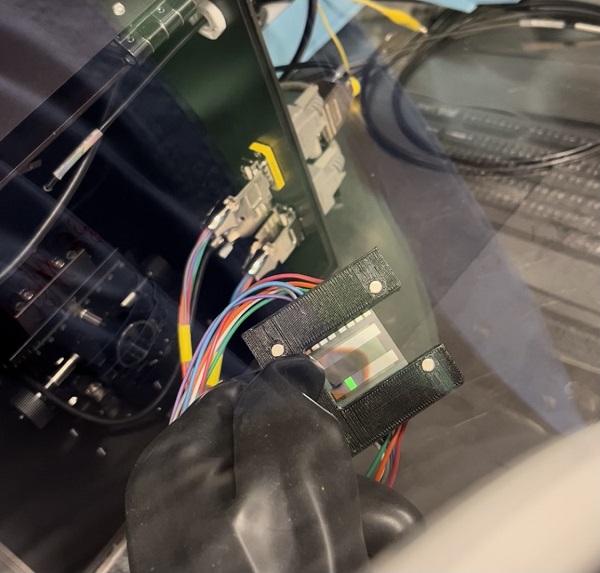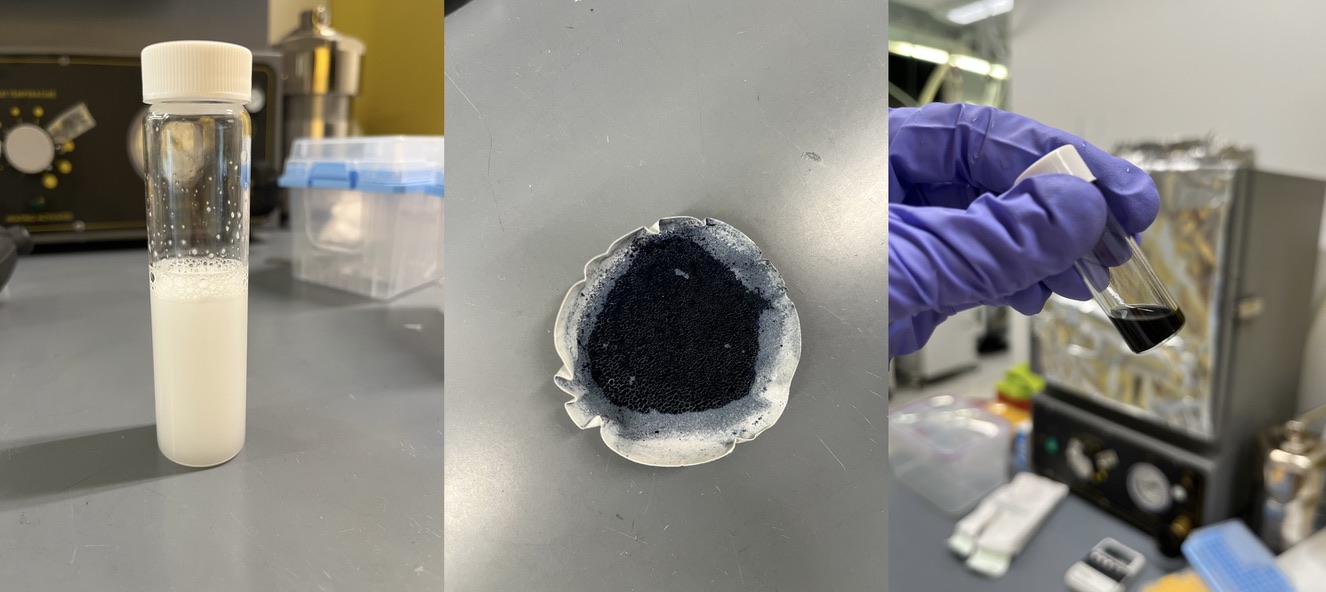Over my summers, I've performed research at Princeton through internships funded by the High Meadows Environmental Institute. I've really liked both experiences so far, but they've been incredibly different, not only being in different departments but requiring very different skill sets. Two summers ago, I worked remotely from home with the Interfacial Water Group in the Civil and Environmental Engineering department running simulations of contaminants in water and air. I connected to the Princeton computing clusters from my laptop, and Professor Bourg taught me over Zoom how to create files to run and submit to the supercomputer. This past summer, I worked in the Rand Lab in the Electrical and Computer Engineering department to try to create energy-efficient OLEDs. This work required using specialized equipment like the spin coater and thermal evaporator located only in lab B427. The two internships have been useful in allowing me to reflect on the advantages and disadvantages of coding lab work and manual lab work.
For both types of research, there was a steep learning curve at the beginning. For molecular dynamics simulations, I had to become familiar with the coding language of the software LAMMPS, in order to create input files to run, and with the scheduling language "slurm" as well as the Linux command line for submitting files to the supercomputer. In the Rand lab, a different set of abilities are required. The lab demands physical dexterity that is not required for running simulations, such as being able to insert my hands into the gloves that enter the nitrogen glovebox (easier said than done) and handling the fragile glass substrates with tweezers through the thick glovebox gloves. It also demands a certain vigilance, as one wrong move could spill an acid onto the floor or disturb someone's multi-day experiment.
I like the convenience of running simulations, in that I can work at it whenever I choose and from any location with a VPN connection. And at an earlier point in my OLED internship, I'm was much more familiar with running simulations than working in the lab, therefore simulations felt much more comfortable to me than the newness of the Rand lab. But there is something rewarding about seeing tangible and physical results that I achieve in the lab, like handling a shiny and finished OLED or viewing the color transformation of a compound I synthesize. I don't get quite the same feeling from seeing a display on a computer screen of a simulation I run as when I can hold the physical result of my work.


One of the solutions to be deposited on an OLED in various stages of synthesis, from a) the initial mixture to b) the powder after drying in the vacuum oven to c) the final solution dispersed in ethanol
There are other similarities between the two types of research aside from the learning curves. For instance, both lab groups hold weekly group meetings where a few members of the group give updates on their projects, asking the Head Principal Investigator (PI) and the other group members for feedback. There is a strong sense of community among the different graduate and undergraduate students in each group, revealed in the thoughtful advice they offer to one another. For instance, at a group meeting I spoke about my attempt with my mentor, Jesse, to synthesize a certain solution to use as one of the layers of our OLEDs. I described our problem getting the powder to fully disperse in alcohol. One of the graduate students mentioned that she knows several researchers from a group in France who work specifically on synthesizing solutions like the one we're attempting to create, and she offered to put me in contact with them. I'm really grateful to have had the chance to work in two very different fields.






